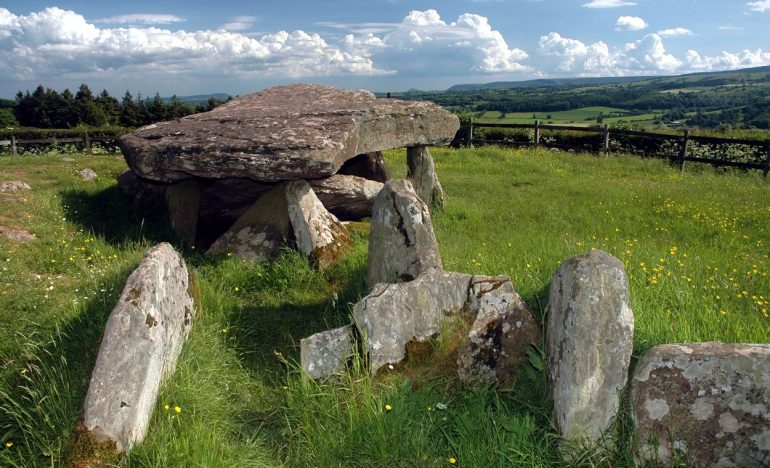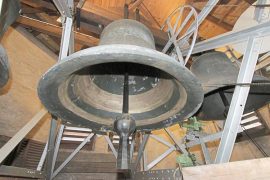Arthur’s Stone Age monument in Herefordshire, West England, was originally part of a much larger burial complex, as new excavations suggest – possibly an entire ceremonial landscape. The dolmen, which was built 5700 years ago, once belonged to a gate-covered burial mound, from which a row of palisades pointed to the nearby Doorstone Hill – the hill on which archaeologists have identified two large “Halls of the Dead” was discovered. time in 2013.
Arthur’s Stone is a megalithic tomb located near the village of Dorston in Herefordshire – almost on the border with Wales. The dolmen consists of a large, flat capstone supported by nine straight support stones. The tomb is one of the most famous Stone Age buildings in England and is considered the inspiration for the “stone tablet” described by British author CS Lewis in his book “The Lion, the Witch and the Wardrobe”.
Connection to “Hall of the Dead”
Now a team of archaeologists led by Julian Thomas of the University of Manchester has excavated for the first time in the area south of Arthur’s Stone. This revealed signs of a previously unrecognized foothill and two separate construction phases of the monument. In its original form, the dolmen was part of an elaborate burial mound made of layered peat sod. The remains of the fire can be seen in the center of this hill. The researchers found that the peat cover was held in shape by a series of wooden posts stacked around the hill.
Interesting thing about it: tall burial mounds and wooden planks pointed directly to the summit of nearby Doorston Hill—the hill on which archaeologists discovered the remains of two large “Halls of the Dead” in 2013 . These are two wooden buildings that were deliberately burnt down and covered with burial mounds. “It now shows that the Arthur Stone Inn is closely related to the nearby Hall of the Dead,” Thomas said. Arthur Stone’s orientation and the construction of the burial mound both speak to this: “Each of these three peat mounds was built on the base of a large wooden building that had been deliberately burned down.”
Second construction phase with a different orientation
Only in the later construction phase, when Arthur Stone’s timbers had rotted again, were new, larger posts set, no longer towards the hill of Doorston Hill, but towards the southeastern horizon and the gap between Skrid and Garvey. Used to point Hill, as Thomas and his colleagues report. The two stone chambers of the dolmen, which point in the same direction, and a straight stone in front of their entrance also come from this second step.
Thomas says, “Although the Arthur Stone is an iconic megalithic monument of international importance, its origins are still unclear.” “It’s even more exciting that we can finally shed more light on the beginnings of this 5700-year-old tomb and learn more about the history of its construction.” The highland area between the Golden Valley and the Wai Valley is proving to be fast. According to the archaeologist, a group of buildings of the Stone Age – Neolithic as a formal landscape.
Them: University of Manchester

Web guru. Amateur thinker. Unapologetic problem solver. Zombie expert. Hipster-friendly travel geek. Social mediaholic.





